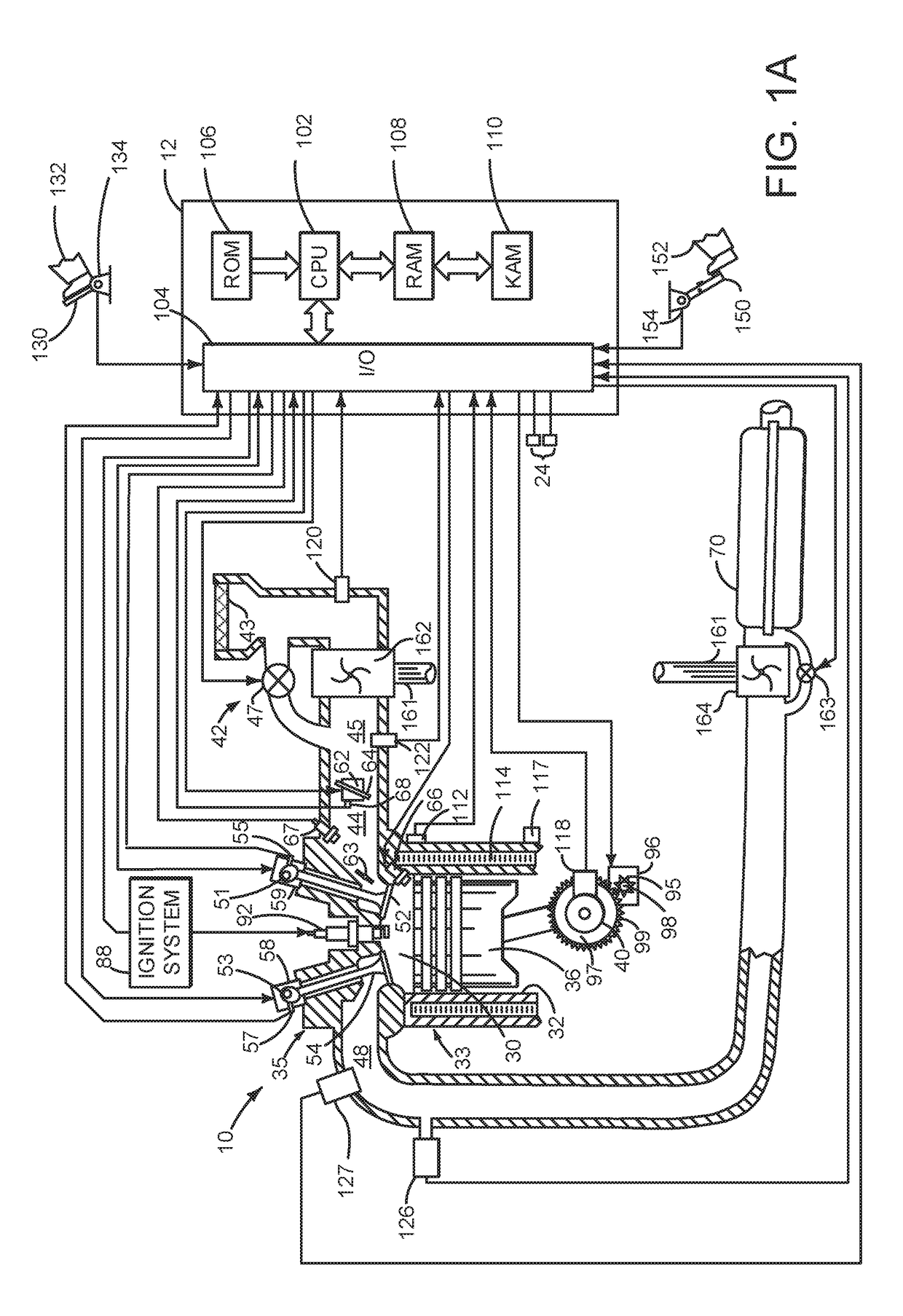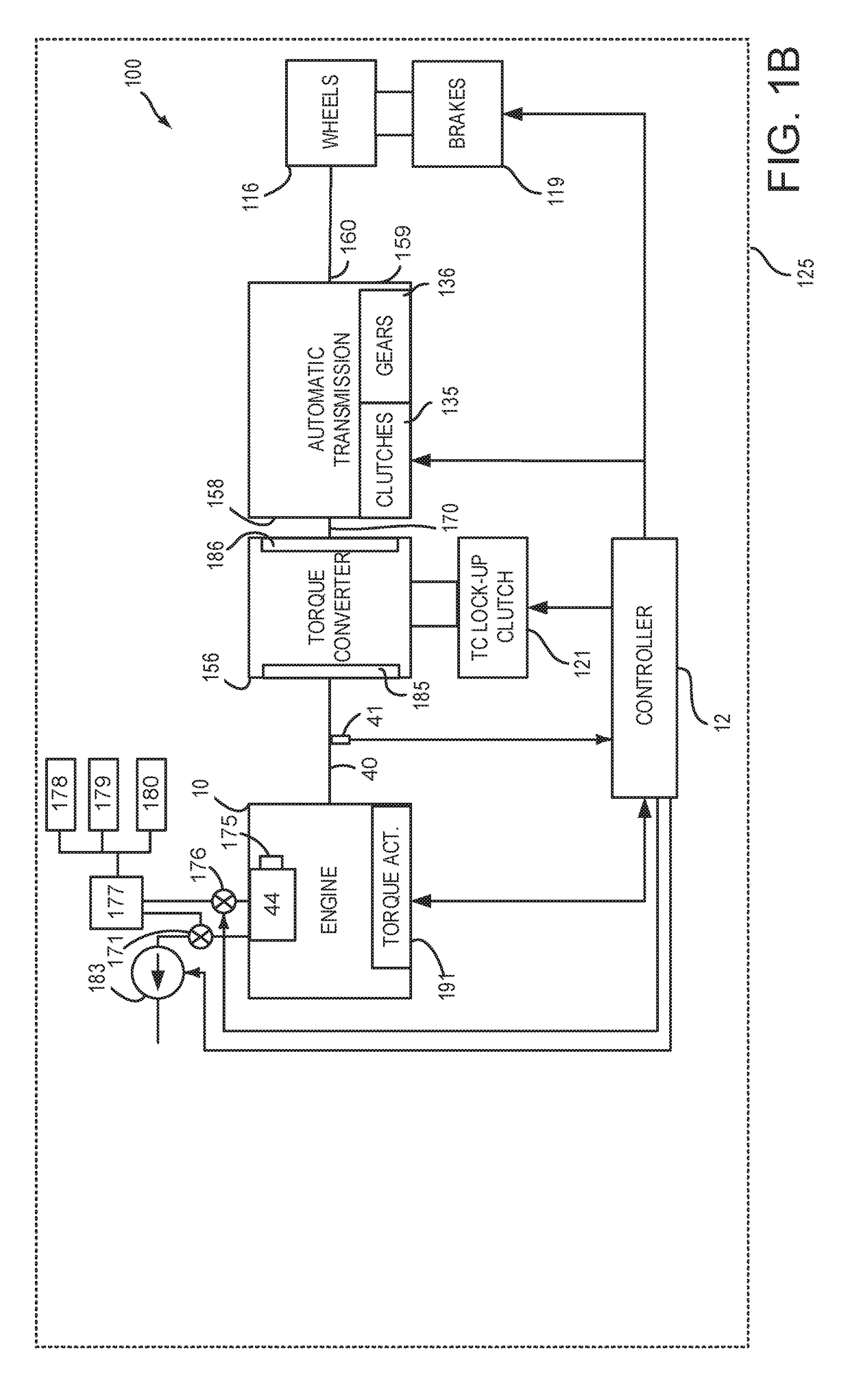System and method for intake manifold pressure control
a technology of intake manifold and pressure control, which is applied in the direction of electrical control, machines/engines, output power, etc., can solve the problems of difficult control of engine torque during intake manifold pump down, increased pressure of intake manifold, and increased torque of cylinders, so as to achieve accurate control of engine torque, low demand torque, and increased torque
- Summary
- Abstract
- Description
- Claims
- Application Information
AI Technical Summary
Benefits of technology
Problems solved by technology
Method used
Image
Examples
Embodiment Construction
[0059]The present description is related to systems and methods for selectively activating and deactivating cylinders and cylinder valves of an internal combustion engine. The engine may be configured and operate as is shown in FIGS. 1A-6D. Various methods and prophetic operating sequences for an engine that includes deactivating valves are shown in FIGS. 7-42. The different methods may operate cooperatively and with the systems shown in FIGS. 1A-6D.
[0060]Referring to FIG. 1A, internal combustion engine 10, comprising a plurality of cylinders, one cylinder of which is shown in FIG. 1A, is controlled by electronic engine controller 12. Engine 10 is comprised of cylinder head casting 35 and block 33, which include combustion chamber 30 and cylinder walls 32. Piston 36 is positioned therein and reciprocates via a connection to crankshaft 40. Flywheel 97 and ring gear 99 are coupled to crankshaft 40. Starter 96 (e.g., low voltage (operated with less than 30 volts) electric machine) incl...
PUM
 Login to View More
Login to View More Abstract
Description
Claims
Application Information
 Login to View More
Login to View More - R&D
- Intellectual Property
- Life Sciences
- Materials
- Tech Scout
- Unparalleled Data Quality
- Higher Quality Content
- 60% Fewer Hallucinations
Browse by: Latest US Patents, China's latest patents, Technical Efficacy Thesaurus, Application Domain, Technology Topic, Popular Technical Reports.
© 2025 PatSnap. All rights reserved.Legal|Privacy policy|Modern Slavery Act Transparency Statement|Sitemap|About US| Contact US: help@patsnap.com



